Home » Off Road Builds » Honda » Honda CRV Off Road Build on 34 Inch Tires and 7.5″ Lift
Honda CRV Off Road Build on 34 Inch Tires and 7.5″ Lift
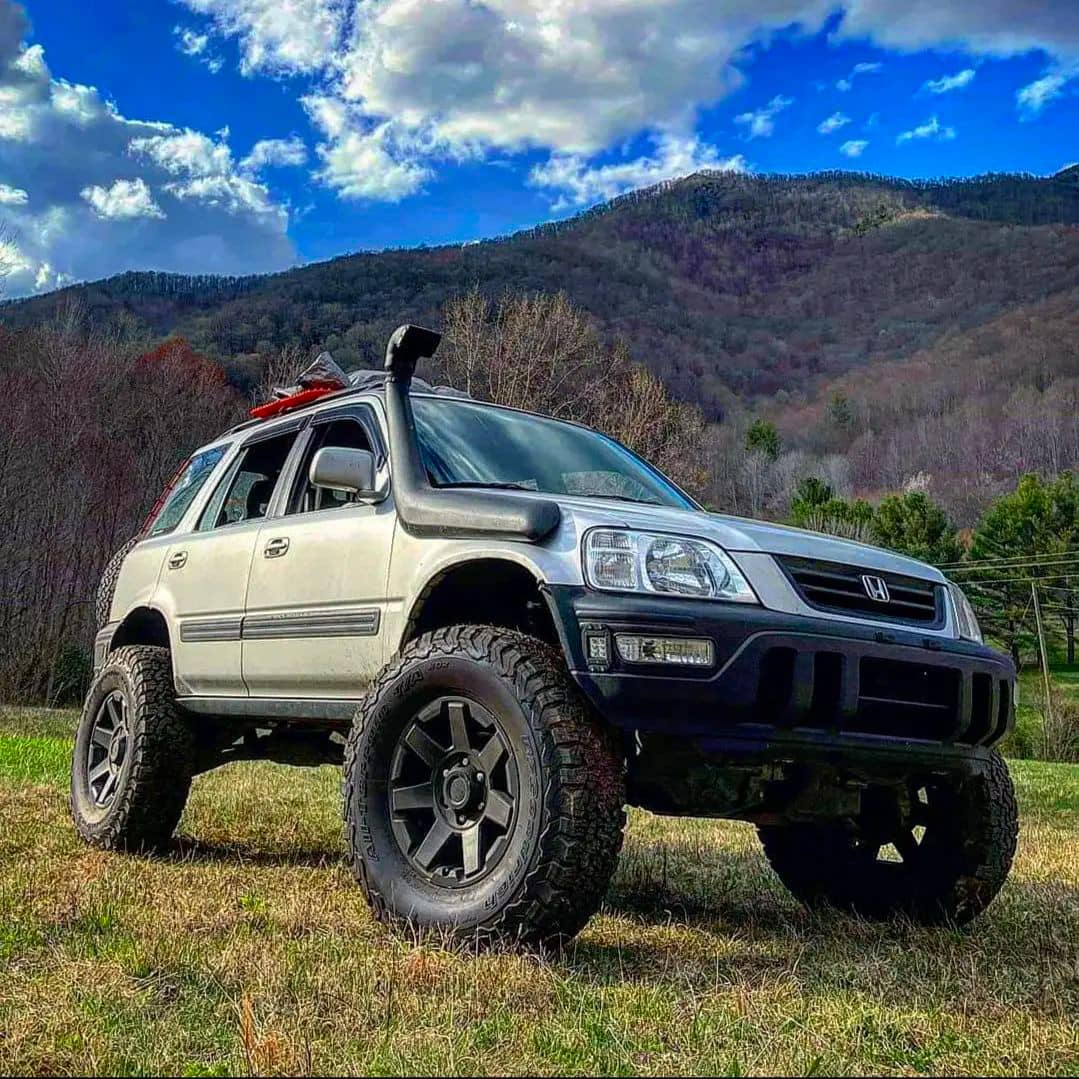
Honda’s CRV has long been a popular platform for tuners and modifiers in the off-road community. The first generation CRV, in particular, with its capable all-wheel-drive system, ample ground clearance, and truncated overhangs, makes an ideal foundation for ambitious off-road builds. While lifted CRVs on larger tires are not unheard of, few take things to the extremes that the owner of this modified 2000 CRV has, fitting a set of massive 34-inch off-road tires – a record-breaking size for the model.
Key Takeaways
- Lifted first-gen Honda CRVs make surprisingly capable overland platforms with the right modifications.
- This 2000 CRV build pushes the boundaries with its radical 7.5″ lift kit, custom fabricated suspension components, 34” BFGoodrich All-Terrain tires, and drivetrain upgrades.
- Custom fabrication was required to properly fit the massive tires and support the increased ride height including extended front spindles, a rear diff locker, reinforced trailing arms, and re-engineered suspension geometry for proper alignment and handling.
Affiliate disclosure: we may earn a small commission at no additional cost to you if you buy through some of the product links in this post.
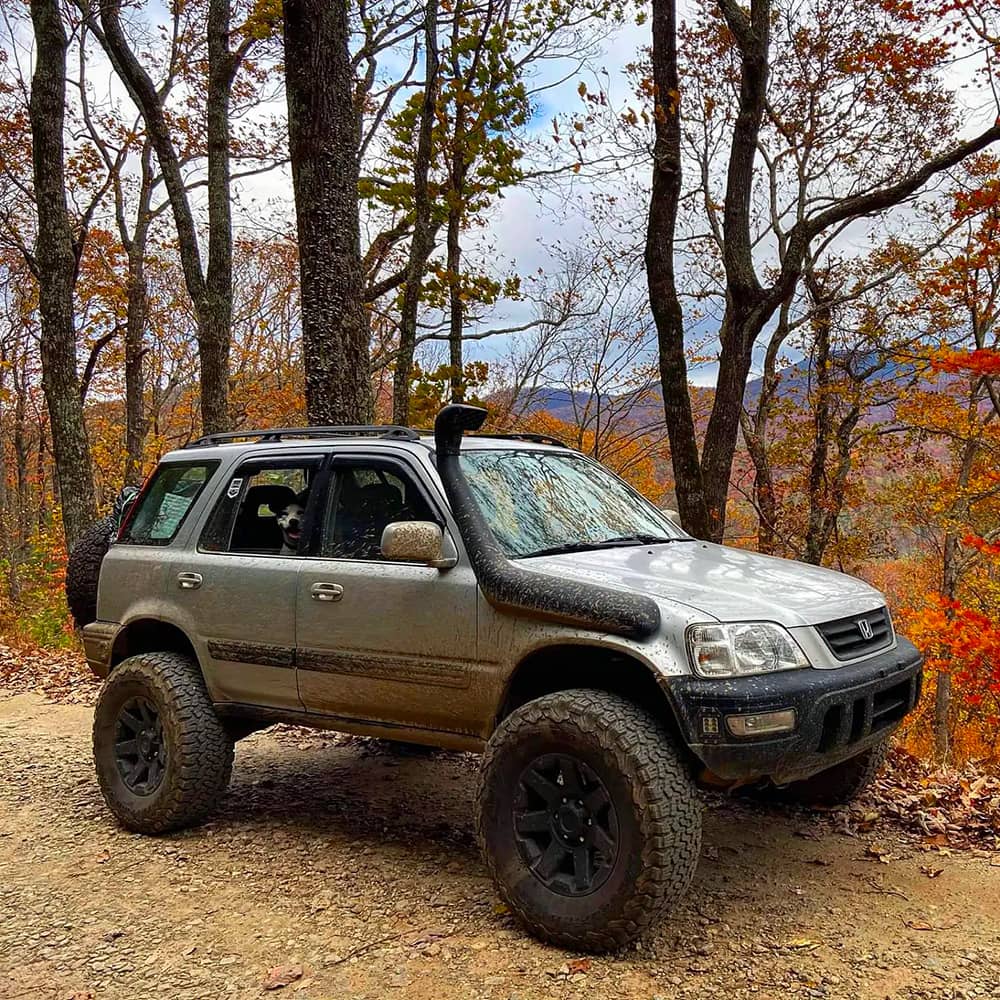
Table of Contents
ToggleHonda CRV Off Road Build
Wheels
- 285/75R17 BF Goodrich T/A KO2
- 2014 4runner TRD trail wheels
- 2″ 5lug to 6 lug adapter.
Suspension Lift
- 7.5″ lift with QA1 springs and Eibach Ground Control Sleeves.
- Custom extended front spindles
- Hand built 3″ driveline drop
- Plated rear trailing arms
- Locked rear diff with a landrover freelander driveshaft
Exterior
- Land Cruiser snorkel kit
- Full Size Spare tire
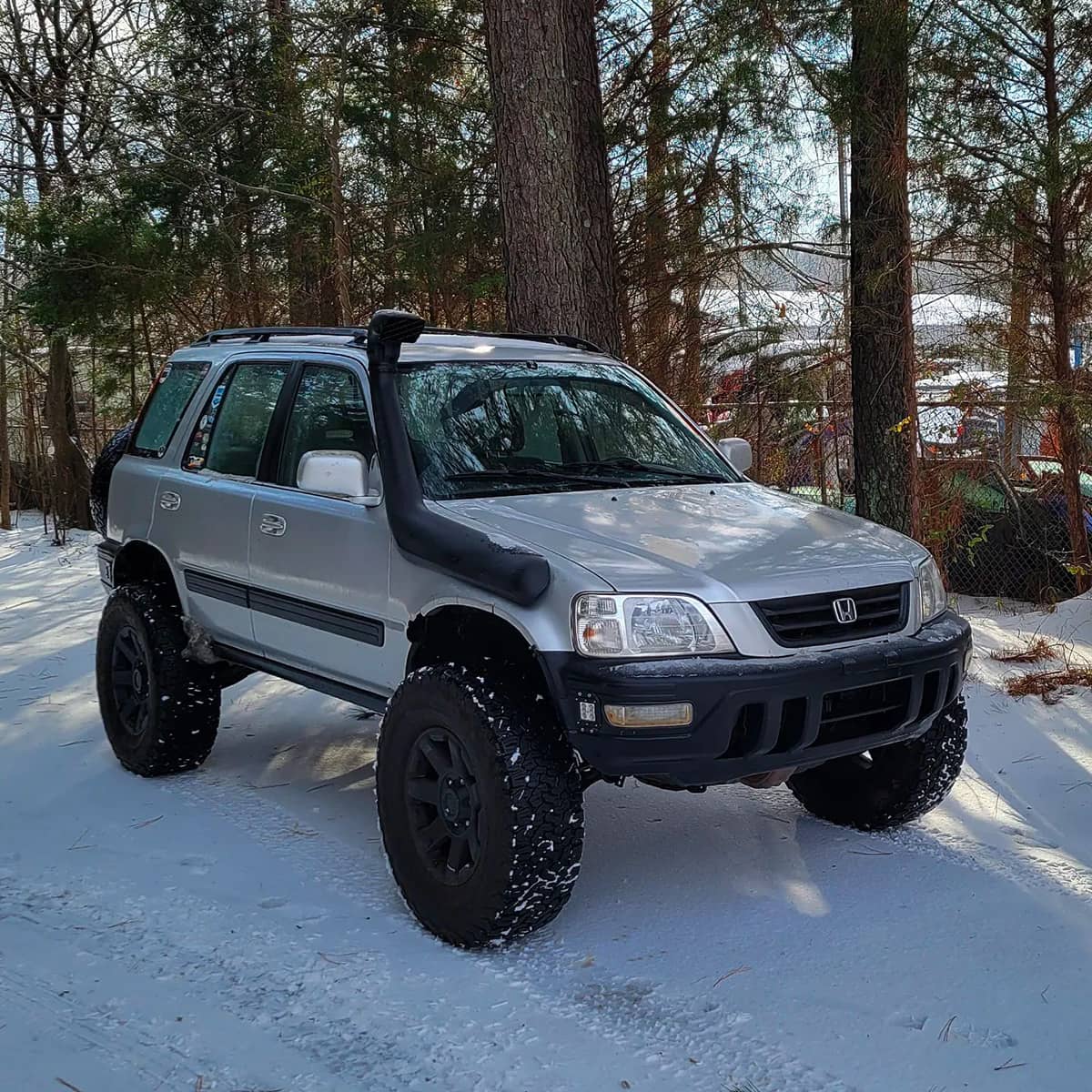
Questions & Answers
How did it all started?
I helped my brother build his 2014 4Runner and seeing all the places he was going and exploring is what made me want to get into the off-road scene but I had to do it my way (the weirdest way possible) had to be something different from the norm.
Why did you choose a Honda CR-V for your off-road project?
I’ve worked on the B series engine platform, basically my whole life so I was wanting to keep to that in case I got stranded 20 miles into a trail at least I know the engine inside and out so I have no problem getting back home (I hydrolocked one about 2 miles into a trail and still drove it out of the trail and to a friend’s house before It finally seized) as far as my favorite part about its gotta be the quick release doors.
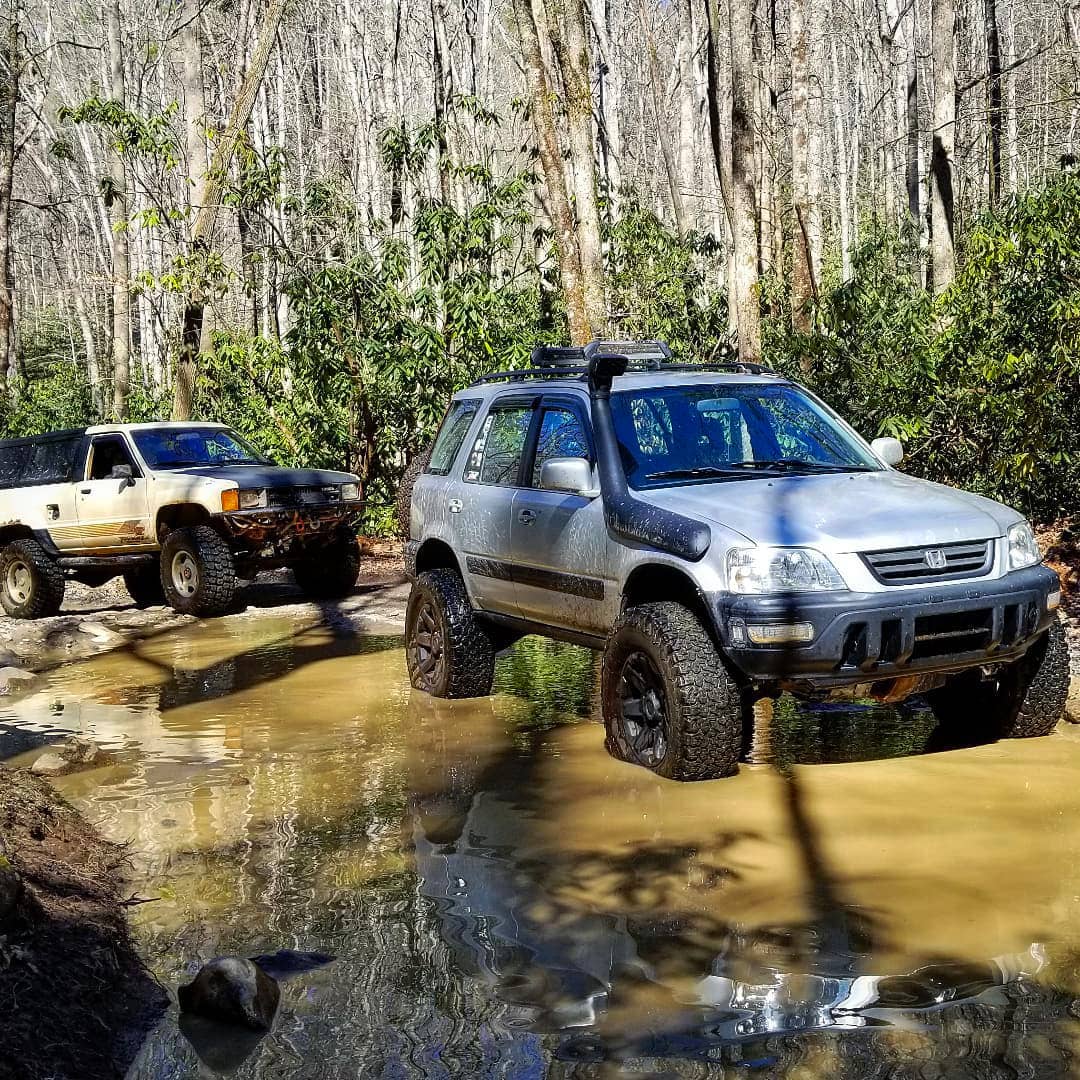
What was the most difficult part of the build?
The most difficult part was definitely getting the suspension geometry. When it had a 4.5″ lift it drove okay but as soon as I did the 7.5″ lift the rear wheels would toe out on compression and start swinging side to side from the back of the car after hitting a bump.
It took me about a month to get the suspension geometry corrected and now every arm is within 2 degrees of a factory CR-V so it drives just like it did stock just a lot slower now . I do plan on fixing the lack of power this winter with a K24 swap and a shorter gear ratio (5.83) where factory is a 4.33 so it should really help the off-road capabilities the CR-V lacks from not having enough torque or gear reduction for the North Carolina mountain trails.
Off road Build Details
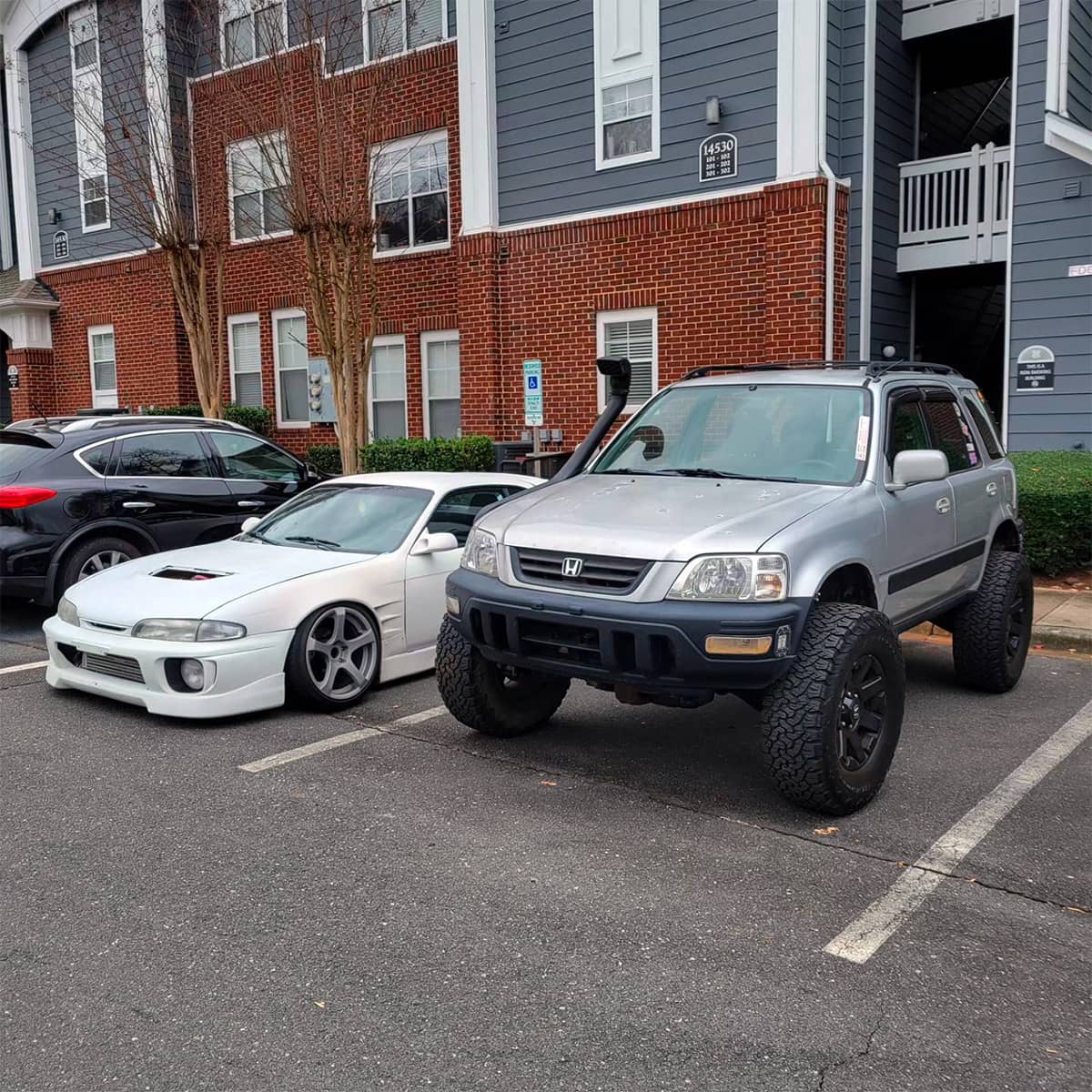
Suspension & Lift
This CRV sits on a radical 7.5” lift kit with QA1 coil springs and Eibach Ground Control sleeves to support the height. Custom extended front spindles were fabricated to increase suspension travel. A hand-built 3” driveline drop was installed to correct the driveshaft angles. The rear trailing arms have been reinforced and a rear diff locker from a Land Rover Freelander improves traction. Reengineered suspension geometry ensures proper wheel alignment and handling after the huge lift.
Off-Road Wheels & Tires
Massive 34” BFGoodrich All-Terrain T/A KO2 tires provide extreme off-road traction and ride on 17” Method wheels from a 2014 Toyota 4Runner. The 5×114.3 wheels required 2” 5-lug to 6-lug adapters to fit the CRV’s hubs. The enormous 285/75R17 tires dwarf the CRV and let it traverse rugged terrain.
Exterior Mods
To support water crossings, a Land Cruiser snorkel kit was installed allowing deep water fording. A full-size spare matches the 34” tires and carries critical gear in a roof-mounted basket. The menacing stance, squat profile and huge tires transform the benign CRV into an intimidating overlander.
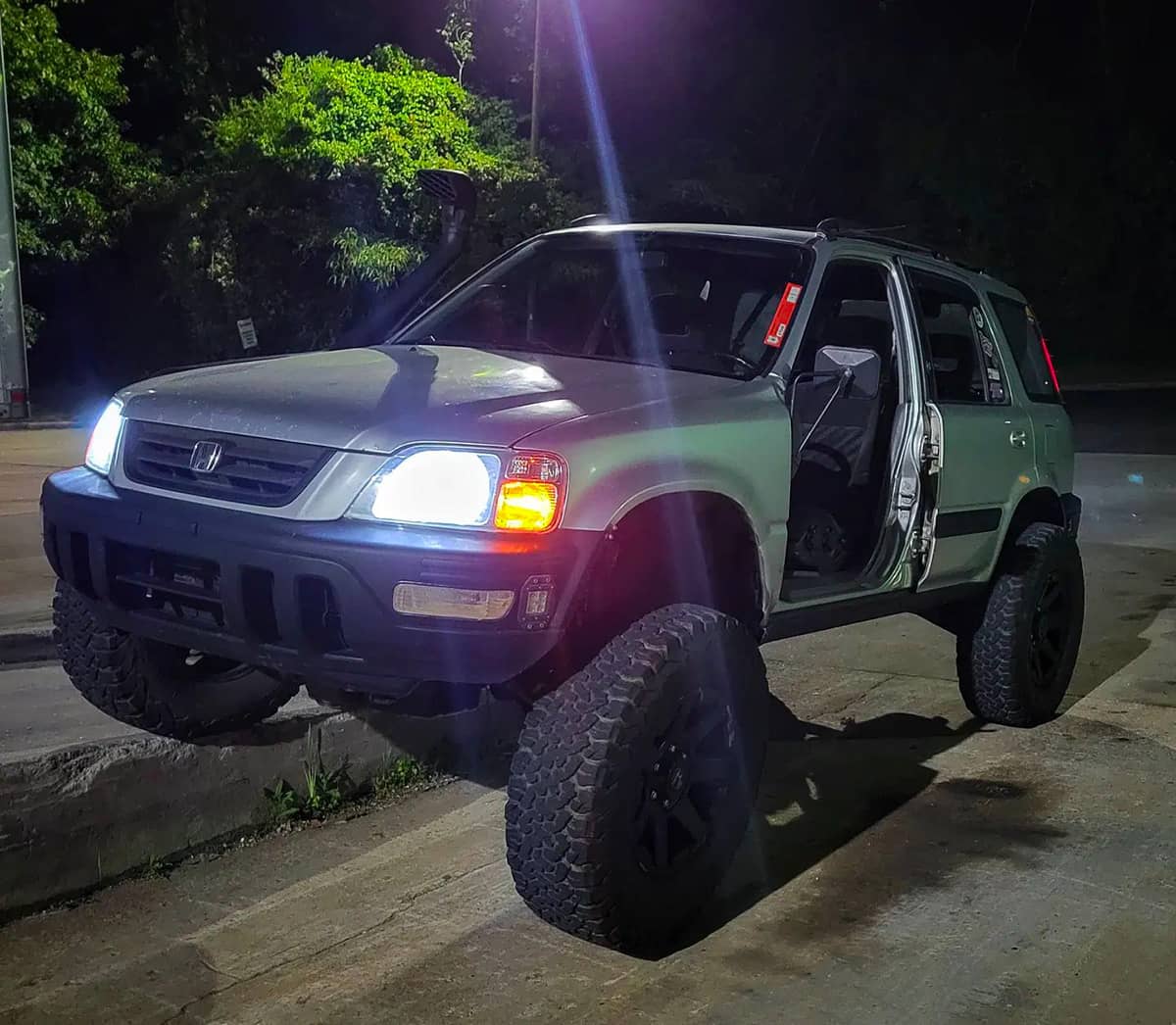
A Word From Mechanic
As a mechanic who has turned wrenches at my own off-road shop for over 10 years, I understand the unique challenges an unlikely vehicle platform like the CR-V presents. My time sorting out finicky electrical gremlins and replacing worn components on early examples has given me valuable insight into these crossovers’ weak points. Don’t let their pedestrian reputation fool you – with proper care and upgrades, the right 1st or 2nd gen CR-V can transform into a surprisingly capable off-road build!
As for the 3rd gen and newer – these models are less capable on the rough terrain due to the weaker AWD system that overheats quite fast on slippery terrain. The ground clearance and long overhangs make it a less attractive option than a 1st or 2nd gen CR-V models.
Choosing the right base
When undertaking an ambitious vehicle build, choosing the right starting point makes all the difference. Based on the used car market data, for a 1st or 2nd generation CR-V project, expect to pay anywhere from $3000 for a high mileage automatic up to $5500 for the most mint 5-speed manual examples still prowling the suburbs.
Repar and Maintenance
As with any 20+ year old vehicle, a pre-purchase inspection is mandatory to get a handle on upcoming repair and maintenance costs before modifying.
On that note, let’s dive into some of the most common weaknesses of CR-V models from this era:
- Worn trailing arm bushes causing the rear to feel like it’s “floating”. Genuine Honda replacement bushes recommended as aftermarket ones tend to crumble.
- Radiator failures and leaks are very common.
- Split rear engine mounts causing a thumping sensation during acceleration. Worse with manual transmission.
- Shuddering when turning tightly can indicate worn rear differential fluid needing replacement. May need a full diff replacement if severe.
- Water pump leaks leading to overheating.
You can find out more about the issues in this article, and check Workshop Repair manuals here.
Off-Road Mods
So then how to maximize the capabilities actually on offer? As I always say, know your vehicle’s strengths and build upon them accordingly. Treat that finicky AWD system gently, air down the pressures for increased grip, and avoid situations guaranteed to roast the driveline. Some suspension options exist, but a basic 1”-2” lift kit should be all that’s required to clear slightly larger and more aggressive rubber. I’ve personally helped owners fit up to a 30” tire package with minimal fender trimming thanks to the generous factory wheel arches. This already provides a nice boost in ride height and rough road compliance. Stick to slower scenic trails and you might surprise your hardcore Jeep buddies!
Conclusion
This extensively customized first-gen Honda CRV proves that even a family-oriented crossover can be radically transformed into a highly capable off-roader when taken to imaginative extremes, fitting massive 34” tires thanks to ample suspension fabrication wizardry.
With upgrades planned for even greater trail prowess, this unlikely overland build breaks perceived boundaries of the CRV platform’s potential and sets a new benchmark for ambitious Honda mods.
Interested readers should check our site for reviews of other lifted Honda builds like the Element, Passport or Ridgeline which creatively stretch crossover capabilities beyond expected limits. With the right modifications nearly any vehicle can surprise as an overlander platform.
Watch the progress and find out more about this lifted Honda CRV project by visiting the Instagram profile of the owner: theoriginalbieb!
Stay tuned for more project reviews on Offroadium.com – Follow us on social media, and share this write up if you enjoyed reading it!
Matt is a professional mechanic, experienced off-roader, writer and founder of Offroadium. With over 15 years immersed in the off-road community and 100,000+ miles logged on rugged trails across the Americas, Grabli shares extensive real-world knowledge. He previously worked as an automotive technician before shifting focus to specialty off-road projects. His passion is prepping capable rigs for off-roading and helping others to build the 4x4s of their dreams.



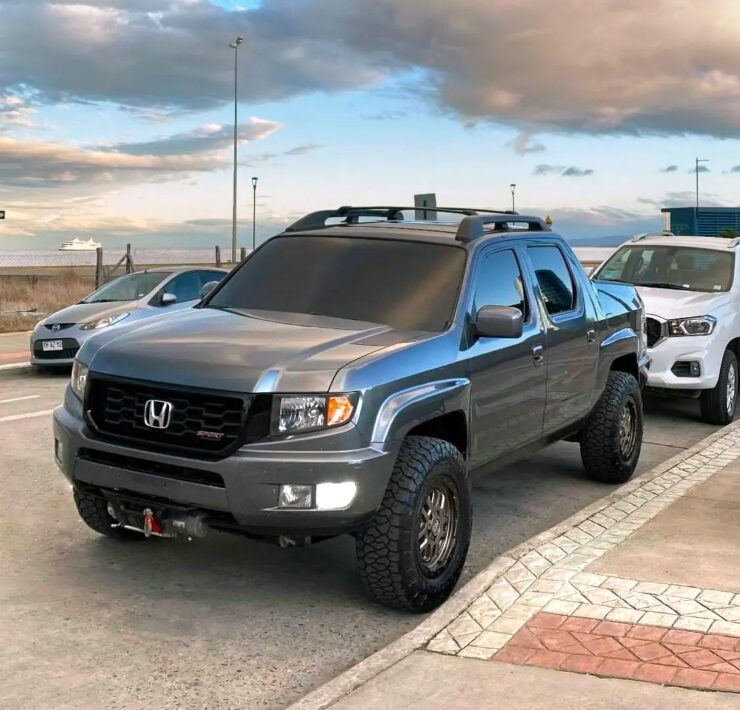
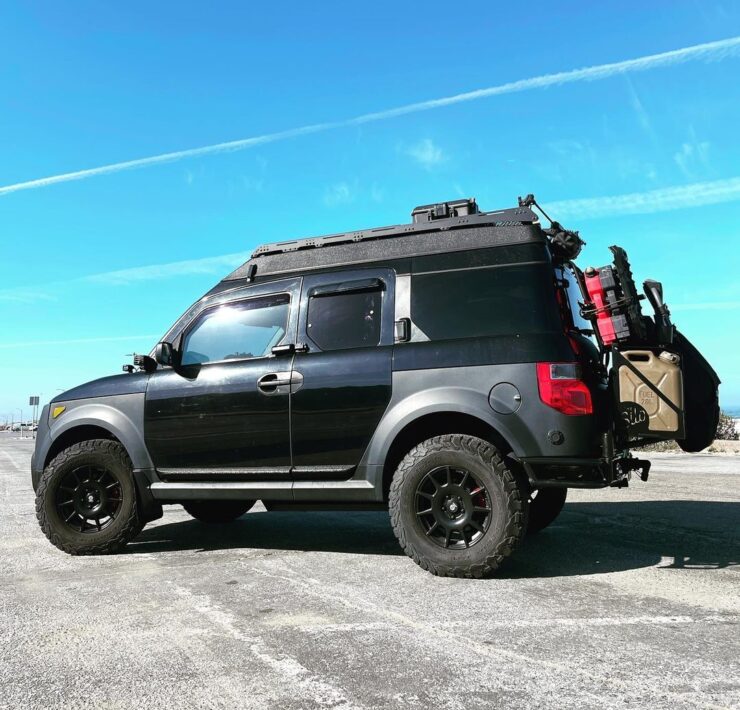
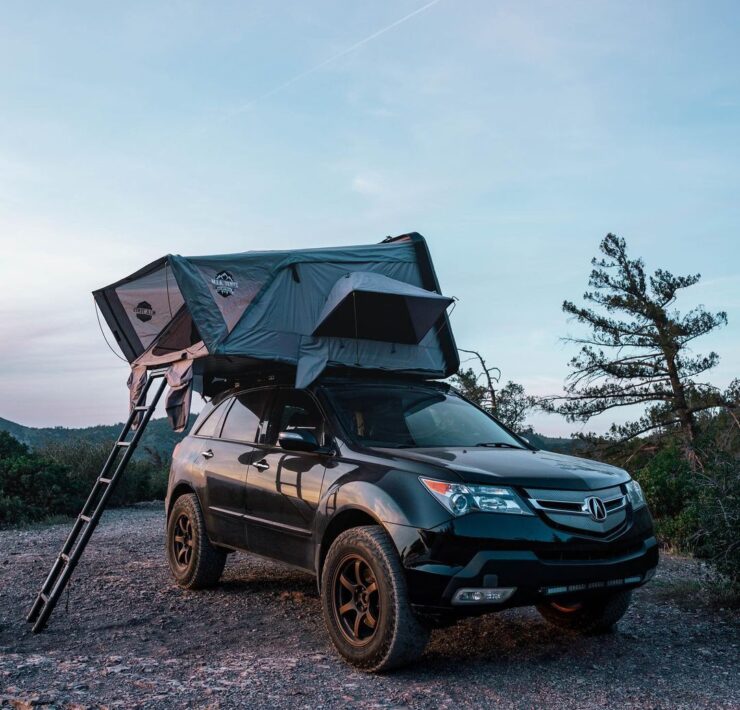
Hi, how do you reduce gear ratio?
To reduce gear ratio in a vehicle, you can either change the transmission gearing or modify the final drive ratio (for increased tire size). These methods effectively lower the overall gear ratio, improving acceleration and low-end torque (but at the expense of top speed and fuel efficiency).